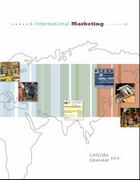Question
1. If the demand for a good is highly elastic, that good is likely to have: a. few close complements. b. few close substitutes. c.
1. If the demand for a good is highly elastic, that good is likely to have:
a. few close complements.
b. few close substitutes.
c. many close substitutes.
d. many close complements.
2. The price elasticity of demand for a good measures the responsiveness of:
a. price to a 1 percent change in the demand for that good.
b. price to a 1 percent change in the quantity demanded of that good.
c. demand to a 1 percent change in price of that good.
d. quantity demanded to a 1 percent change in price of that good.
3. If the price elasticity of demand for cigarettes is 0.55, and the price of cigarettes increases by 10 percent, then the quantity of cigarettes demanded will fall by:
a. 5.5 percent.
b. 0.55 percent.
c. 55 percent.
d. 550 percent.
4. When the price of hot dogs is $1.50 each, 500 hot dogs are sold every day. After the price falls to $1.35 each, 510 hot dogs are sold every day. At the original price, what is the price elasticity of demand for hot dogs?
a. 66.67
b. 5
c. 0.2
d. 2
5. When calculating price elasticity of demand, if the percentage change in price is negative, then the percentage change in quantity demanded is typically:
a. greater than one.
b. positive.
c. negative.
d. less than one.
6. The demand for a good is inelastic with respect to price if the price elasticity of demand is:
a. equal to negative one.
b. equal to one.
c. greater than one.
d. less than one.
7. If the price elasticity of demand for food is 0.03, then a 6 percent increase in the price of food will lead to a ________ decrease in quantity demanded.
a. 0.18 percent
b. 18 percent
c. 1.8 percent
d. 0.018 percent
8. If a 10 percent decrease in the price of a good leads to a 20 percent increase in the quantity demanded, then what is the price elasticity of demand?
a. 2
b. 0.5
c. 10
d. 20
9. If consumers respond to a 10% price reduction by buying twice as much of a particular good, we would conclude that:
a. there was excess supply at the original price.
b. the price elasticity of demand at the original price was greater than one.
c. there was excess demand at the original price.
d. the price elasticity of demand at the original price was less than one.
10. If the percentage change in the price of a good is equal to the percentage change in the quantity demanded of that good, then the demand for that good is:
a. inelastic.
b. elastic.
c. perfectly elastic.
d. unit elastic.
11. Suppose the company that owns the vending machines on your campus has doubled the price of a can of soda. They then notice that they are selling approximately 15 percent fewer sodas. The price elasticity of demand for sodas from the campus vending machines, therefore, is:
a. unit elastic.
b. infinite.
c. elastic.
d. inelastic.
12. The price elasticity of demand is a measure of:
a. how consumers respond to excess demand.
b. the change in quantity demanded of a good that results from a change in its price.
c. the change in price of a good that results from a change in its quantity demanded.
d. the demand for a good.
13. If the absolute value of the price elasticity of demand for cell phone service is 3, then if the price of cell phone service increases by 1 percent, quantity demanded would:
a. increase by 0.33 percent.
b. increase by 3 percent.
c. decrease by 3 percent.
d. decrease by 0.33 percent.
14. If the price elasticity of demand for pineapples is 0.75, then a 4 percent increase in the price of pineapples will lead to a:
a. 0.75 percent increase in the quantity of pineapples demanded.
b. 3 percent decrease in the quantity of pineapples demanded.
c. 0.75 percent decrease in the quantity of pineapples demanded.
d. 3 percent increase in the quantity of pineapples demanded.
15. If consumers cannot readily switch to a close substitute when the price of a good increases, the demand for that good is likely to be:
a. perfectly elastic.
b. unit elastic.
c. inelastic.
d. elastic.
16. If the price of cheese falls by 1 percent and the quantity demanded rises by 3 percent, then the price elasticity of demand for cheese is equal to:
a. 0.30.
b. 0.333.
c. 30.
d. 3.
17. If the price elasticity of demand for a good equals one, then the demand for that good is:
a. inelastic.
b. elastic.
c. perfectly elastic.
d. unit elastic.
18. If the price of textbooks increases by one percent and the quantity demanded falls by one-half percent, then demand for textbooks is:
a. negative.
b. elastic.
c. inelastic.
d. unit elastic.
19. Which of the following is likely to have the highest price elasticity of demand?
a. Nike running shoes
b. Running shoes
c. Shoes
d. The price elasticity of demand will be the same for all of the answers listed.
20. All else equal, the price elasticity of demand tends to be higher when:
a. a good has many substitutes.
b. the time horizon is relatively short.
c. people spend a small fraction of their budget on the good.
d. supply increases.
Step by Step Solution
There are 3 Steps involved in it
Step: 1

Get Instant Access to Expert-Tailored Solutions
See step-by-step solutions with expert insights and AI powered tools for academic success
Step: 2

Step: 3

Ace Your Homework with AI
Get the answers you need in no time with our AI-driven, step-by-step assistance
Get Started


